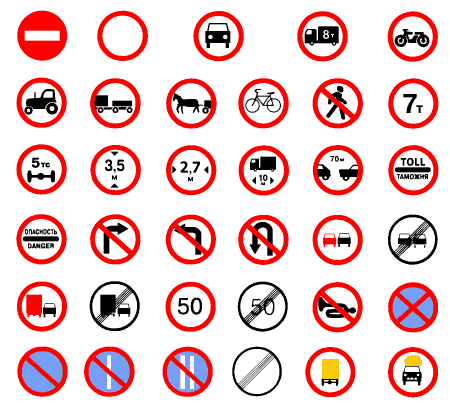Sahl on “prohibition” in horary
In the last post I reviewed Lilly’s understanding of “prohibition.” This post is a follow-up which will look at some examples of prohibition by Sahl (Zael, Zahel), a 9th century Persian Jewish astrologer whose work was translated by Dr. Ben Dykes (2008). According to Sahl, there are three types of prohibition.

In the following explanation let S1 and S2 be the primary significators. Let P be the prohibiting or impeding planet. Generally S1 is the lord of the Ascendant, and S2 is the lord of the quesited. The quesited matter will usually come to pass if S1 and S2 can perfect an aspect or bodily conjunction without interference from another planet (P). The faster significator will apply to the slower one.
The cutting off of light. In this case S1 and S2 are applying to perfect a Ptolemaic aspect, and S1 has fewer degrees in its sign than S2 does. If P has fewer degrees than S2 and will perfect an aspect with S2 before S1 can perfect its aspect to S2, then P cuts off the light of S1, preventing the quesited matter from coming to pass.Sahl gives the following example:
Suppose the male querent asks, “Will I marry this woman?”
Virgo rises, making Mercury the significator of the querent and Jupiter (Pisces on 7th cusp) the ruler of the marriage partner or potential spouse.
Let Mercury be at 9 Cancer and Jupiter at 14 Pisces, so they are applying to a trine with reception of Mercury into Jupiter’s sign of exaltation. By all appearances the marriage should come off without a hitch.
HOWEVER, suppose that Mars lies at 12 Aries and that Mercury will square Mars before the winged planet can perfect its trine with Jupiter. Mars stands in the way of Mercury trining Jupiter, that is, Mars cuts off the light of Mercury before it can reach Jupiter. In this case Aries is the second sign after Pisces, the potential spouse, so that the prohibiting factor may be that the wife’s dowry is inadequate to convince the man to marry this woman.
Sahl’s second type of prohibition occurs when all three planets (S1, S2 and P) occupy the same sign of the zodiac. In this case P is situated between S1 and S1, and P will perfect its bodily conjunction with S2 before S1 can get there. Hence P prevents S1 from connecting with S2 in an unimpeded manner.
Sahl gives the following example of type 2 prohibition:
Suppose the question is again about a marriage, but in this case Cancer rises with Capricorn on the 7th cusp. Moon signifies the querent, and Saturn signifies the potential spouse. Suppose also that Mars lies between the Moon and Capricorn, with all three planets occupying Gemini, as follows:
Moon (7 Gemini) –> Mars (9 Gemini) –> Saturn (11 Gemini)
The body of Mars prohibits the Moon from reaching the body of Saturn in an unimpeded manner, thus preventing the marriage from taking place. Because Mars rules the 5th and 10th signs and occupies the 12th, some issue related to those signs may get in the way of the marriage.
Sahl’s third type of prohibition occurs when one significator and a prohibiting planet occupy the same sign while the other significator applies to its homologue from another sign of the zodiac. In other words, either S1 and P occupy the same sign and S2 applies to aspect S1 from another sign, or S2 and P occupy the same sign and S1 apples to aspect S2 from another sign.
Sahl gives the following example of type 3 prohibition:
Suppose the question is about a marriage. Let Cancer rise and Capricorn be on the 7th cusp. Then the Moon signifies the querent and Capricorn, the potential spouse. Let the Moon (S1) be at 14 Scorpio, Saturn (S2) be at 22 Taurus, and Mars (P) at 17 Taurus. We can diagram this situation as:
S1 Moon (14 Scorpio) –OPPOSE–> P Mars (17 Taurus) –> S2 Saturn (22 Taurus)
Here the opposition ray of the Moon (S1) will connect with the body of Mars (P) and then go on the connect with the body of Saturn (S2), so that Mars stands in the way of the Moon (S1) aspecting Saturn (S2) in an unimpeded manner. Sahl further notes that a bodily conjunction of planets (Mars conjunct Saturn) is more powerful and an aspect between them (Moon oppose Saturn).
Sahl gives yet another example of prohibition. Suppose the question is again one about marriage. Let Aries rise and Libra be on the 7th cusp. The Mars is the querent and Venus, the potential spouse. Let Mars (S1) lie at 19 Taurus in the same sign as the Moon (P) at 9 Taurus. Let Venus (S2) lie at 14 Cancer. An applying sextile from Venus (S2) in Cancer to Mars (S1) in Taurus could bring the marriage to fruition. HOWEVER, the Moon is applying to sextile Venus and then to bodily conjoin Mars, thus impeding the perfection of Venus sextile Mars which takes place only after the Moon conjoins Mars. Sahl again notes that a bodily conjunction of planets in the same sign is stronger than an aspect.
 Sahl writes that bodily conjunction is stronger than connection by aspect (looking, beholding).
Sahl writes that bodily conjunction is stronger than connection by aspect (looking, beholding).Image from wikipedia
Anthony Louis's Blog
- Anthony Louis's profile
- 29 followers



